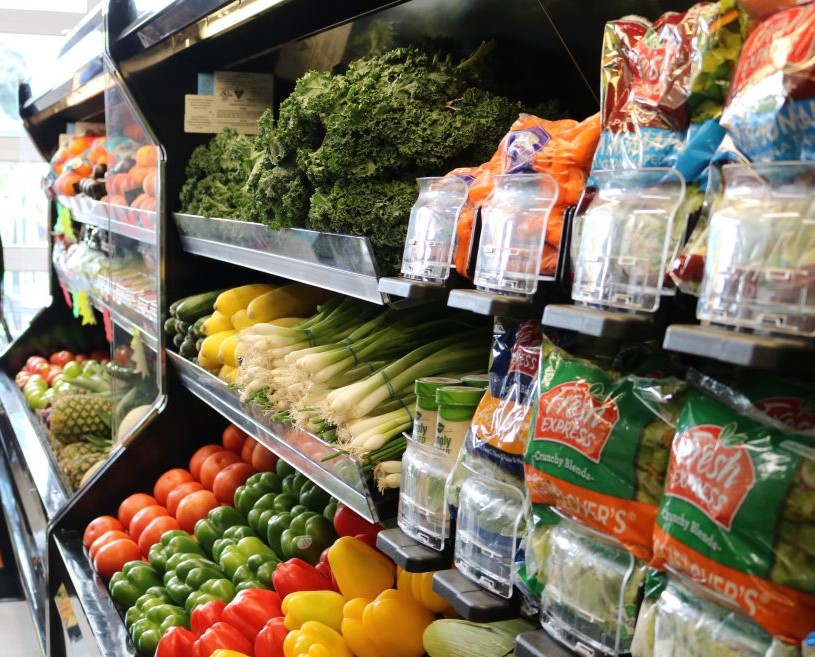Many in Wisconsin Rely on Food Stamps, Obamacare
Numbers show big statewide impact and even bigger in Milwaukee County.
Two numbers suggest what is at stake for Wisconsin residents as the federal government shutdown delays food stamp benefits and moves to end tax credits that lower the cost of Obamacare.
One in nine Wisconsin residents rely on food stamps to feed their families, but federal officials who pay for the program said it ran out of money Saturday. Officially called the Food Share program, it provided $115 million in Wisconsin benefits in September.
One in 20 Wisconsin residents enrolled in Obamacare — the Affordable Care Act (ACA) — for health insurance this year. But the scheduled Jan. 1 end of federal tax credits means monthly premiums next year could go up by as much as $3,000 per month for a rural couple in their 60s — a ninefold increase that would force many to leave the program and go without health insurance, Democratic Gov. Tony Evers has warned.
Party leaders in Washington continued to blame each other for the shutdown. President Donald Trump and Republican Congressional leaders say they won’t negotiate over future Obamacare subsidies until Democrats vote to fund the government. Democratic leaders say that won’t happen unless a government funding plan restores safety-net programs.
Friday, federal judges ruled that the Trump Administration must use emergency funds to continue making Food Share payments to the states. It was unclear whether the rulings would be appealed but, according to the Wisconsin Department of Health Services, payments would be delayed.
Late last month, Evers said an end to food-stamp benefits means 700,000 Wisconsin residents would go “without access to basic food and groceries.”
Residents who meet income and other requirements, including a limit on cash or other “liquid” assets, can buy food, and seeds and plants for home gardens, but cannot buy alcohol, tobacco, hot foods, vitamins, medicines and other non-food items with food stamps. Healthy adults with no dependents must also meet work requirements, except in regions with high unemployment rates. Only U.S. citizens and legal immigrants can qualify for food stamps.
The state Department of Health and Human Services (DHHS) reports monthly totals for Food Share recipients. The agency said 684,662 residents got $115 million worth of benefits in September — 55% of them, or 379,341, were women and more than one-third of them were children.
The agency said more than one-third of those recipients — 234,519 — lived in Milwaukee County. The four other counties with the most participants were Dane, 45,170; Racine, 29,699; Brown, 26,634; and Rock, 22,934.
DHSS broke September Food Share recipients down by age: 39% were under 17; 36% were 18 to 49; 13% were 50 to 64; and 12% were over the age of 65.
State officials also said the average Food Share benefit was $302 in September; the average household size is 1.9 persons.
The maximum benefit by household size was $298 for a single person, $546 for a two-person household, $785 for a three-person household, $994 for a four-person household and $1,183 for a five-person household.
Evers issued an emergency declaration Friday that orders the state Department of Agriculture, Trade and Consumer Protection to protect consumers against price gouging by retailers in response to the delay in food stamp benefits.
For Obamacare, Evers said in January that a record 313,579 Wisconsin residents enrolled in coverage through the ACA marketplace this year — a one-year increase of almost 18%. It was a 52% increase in participants since the pre-COVID year of 2019.
Last week, Evers warned of “skyrocketing” premium increases next year, if tax credits end. “President Trump and Republicans in Congress must work across the aisle to ensure these Affordable Care Act tax credits do not expire,” he said.
In 2024, the nonpartisan Fiscal Bureau said in a report that a single person with an annual income of $37,650 paid $125 per month for a second-level Silver plan.
But Insurance Commissioner Nathan Houdek gave these examples of how Obamacare premiums would increase, if tax credits expire:
-A 26-year-old no longer covered by their parents’ plan buying a Silver plan would pay $1,437 more a year in Milwaukee County and $1,532 more in Dane County.
-A family of four with a household income of $130,000 buying a Silver plan would pay $17,247 more in Milwaukee County and $12,562 more in Dane County.
-A 60-year-old couple in Barron County with a household income of $85,658 would be hit the hardest, facing a $33,152 increase in annual premiums for a Silver plan. That same couple would face a $25,203 annual increase in Milwaukee County and a $19,833 annual increase in Dane County.
Steven Walters started covering the Capitol in 1988. Contact him at stevenscotwalters@gmail.com
If you think stories like this are important, become a member of Urban Milwaukee and help support real, independent journalism. Plus you get some cool added benefits.






















While Republicans and Democrats are blaming each other for the shutdown, let us remember that the big ugly bill (budget resolution) is the cause of both the health insurance and SNAP crises. Despite enormous voter dissent, Republicans passed the ugly bill. They created the mess; it’s up to them to clean it up.
Congress has failed. The Congress needs to pass a continuing resolution. Congress passed the big ugly bill. Congress passes law. Congress is responsible for the national debt.
Why do we keep blaming the President?